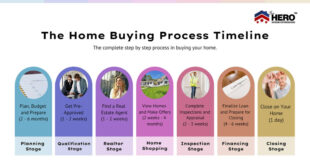Private Mortgage Insurance Rates: Everything You Need to Know. Private Mortgage Insurance (PMI) rates can significantly impact the cost of homeownership. Whether you’re a first-time homebuyer or exploring refinancing options, understanding PMI is essential to making informed decisions. In this article, we’ll delve into PMI rates, factors affecting them, and strategies to manage or eliminate PMI costs effectively.
What Is Private Mortgage Insurance (PMI)?
PMI is a type of insurance that lenders require when borrowers make a down payment of less than 20% on a conventional mortgage. It protects the lender in case the borrower defaults on the loan. While it benefits the lender, PMI adds an additional expense for homeowners.
How Are PMI Rates Determined?
PMI rates typically range between 0.2% and 2% of the original loan amount annually. These rates are influenced by several factors:
- Loan-to-Value (LTV) Ratio: A higher LTV ratio generally leads to higher PMI rates.
- Credit Score: Borrowers with lower credit scores are considered higher risk and may pay more for PMI.
- Loan Amount: Larger loans often result in higher PMI payments.
- Loan Term: Longer-term loans may carry higher PMI rates.
- Type of Loan: Adjustable-rate mortgages (ARMs) may have different PMI rates compared to fixed-rate loans.
Types of PMI
- Borrower-Paid Mortgage Insurance (BPMI): The most common type, paid monthly.
- Single-Premium Mortgage Insurance (SPMI): A one-time payment made at closing.
- Lender-Paid Mortgage Insurance (LPMI): The lender pays the PMI but may charge a higher interest rate.
- Split-Premium Mortgage Insurance: Combines upfront and monthly payments.
Average Private Mortgage Insurance Rates
Here are the average PMI rates based on key factors:
- Excellent Credit (740+): 0.2% – 0.5%
- Good Credit (680-739): 0.5% – 1.0%
- Fair Credit (620-679): 1.0% – 2.0%
For a $250,000 loan:
- Excellent Credit: $41 – $104/month
- Good Credit: $104 – $208/month
- Fair Credit: $208 – $416/month
How to Calculate PMI Costs
To calculate your PMI cost:
- Determine your loan amount.
- Multiply the loan amount by your PMI rate.
- Divide the result by 12 to find the monthly PMI payment.
For example:
- Loan Amount: $250,000
- PMI Rate: 0.75%
- Annual PMI: $250,000 × 0.0075 = $1,875
- Monthly PMI: $1,875 ÷ 12 = $156.25
How to Lower Private Mortgage Insurance Rates
- Improve Your Credit Score: Aim for a score of 740 or higher.
- Increase Your Down Payment: Putting down at least 20% eliminates the need for PMI.
- Choose the Right Loan Type: Explore options with lower PMI rates.
- Shop Around for Lenders: Compare offers to find the best PMI rates.
- Request PMI Cancellation: Once your LTV drops below 80%, request cancellation.
How to Eliminate PMI
- Reach 20% Equity: Make extra payments to reduce your loan balance faster.
- Refinance Your Loan: Switch to a loan without PMI.
- Appreciation in Home Value: If your home value increases significantly, get a new appraisal to prove sufficient equity.
Pros and Cons of Private Mortgage Insurance
Pros:
- Enables homeownership with a lower down payment.
- May allow borrowers to buy a home sooner.
- PMI payments are often temporary.
Cons:
- Adds to monthly expenses.
- Offers no direct benefit to the borrower.
- Can be costly over time.
10 Tips to Manage Private Mortgage Insurance Rates
- Save for a Larger Down Payment: Reduce the LTV ratio to lower PMI rates.
- Monitor Your Credit Score: Regularly review your credit report and address issues.
- Pay Extra on Your Mortgage: Accelerate equity growth.
- Avoid Adjustable-Rate Mortgages (ARMs): Fixed-rate loans may offer more predictable PMI costs.
- Choose Shorter Loan Terms: Lower risk for lenders can result in reduced PMI rates.
- Negotiate with Lenders: Some lenders may offer discounts on PMI rates.
- Bundle with Other Insurance: Some providers offer discounts for bundling PMI with homeowners insurance.
- Refinance Wisely: Ensure refinancing saves you money overall.
- Keep Documentation Ready: Be prepared for PMI cancellation requests.
- Understand Your Loan Agreement: Know the conditions for PMI removal.
10 FAQs About Private Mortgage Insurance Rates
- What is the minimum down payment to avoid PMI?
- A 20% down payment is typically required to avoid PMI.
- Can I negotiate PMI rates?
- While PMI rates are generally non-negotiable, improving your credit score and shopping around for lenders can help.
- Is PMI tax-deductible?
- PMI may be tax-deductible depending on your income and current tax laws.
- How long do I have to pay PMI?
- Until your LTV reaches 78% or you reach 20% equity and request cancellation.
- Does refinancing remove PMI?
- Yes, if you refinance into a loan with sufficient equity.
- Can PMI rates change?
- Rates remain fixed unless you refinance or modify your loan.
- What happens if I miss PMI payments?
- PMI is included in your mortgage payment, so missing payments could lead to loan default.
- Do government-backed loans require PMI?
- FHA loans require a similar insurance called MIP, not PMI.
- What’s the difference between PMI and homeowners insurance?
- PMI protects the lender, while homeowners insurance protects the borrower’s property.
- Is single-premium PMI a good option?
- It can be, especially if you plan to stay in the home long-term.
Conclusion
Private Mortgage Insurance rates are a crucial aspect of financing a home with a lower down payment. While PMI increases monthly costs, it enables homeownership for those unable to save 20% upfront. Understanding PMI, its calculation, and strategies for managing or eliminating it can save homeowners significant amounts over time.
By improving your credit score, increasing your down payment, or refinancing strategically, you can minimize PMI costs. Always compare lender options and stay informed about your equity position to ensure you’re getting the best deal possible. With these tips, managing PMI becomes a straightforward part of your homeownership journey.
 mortgage.kbk.news
mortgage.kbk.news
